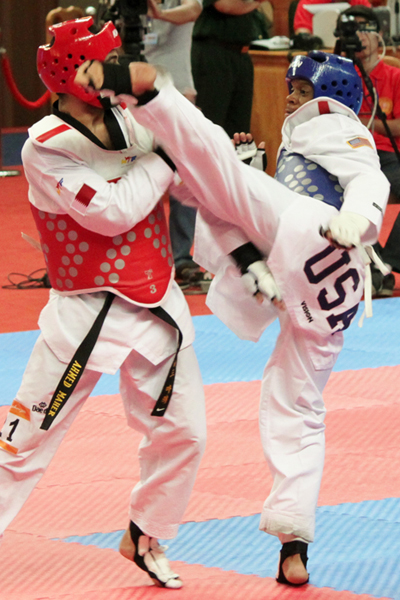Quantifying Impacts for Sports that Score by Force
 Most sports and athletic activities, in some way, are an exhibition of opposing forces competing against one another. Some sports competitions are judged entirely on force impacts, such as in martial arts, boxing, and even fencing. Having methods to capture these force impacts can enhance scoring accuracy and improve the entertainment value of these competitions.
Most sports and athletic activities, in some way, are an exhibition of opposing forces competing against one another. Some sports competitions are judged entirely on force impacts, such as in martial arts, boxing, and even fencing. Having methods to capture these force impacts can enhance scoring accuracy and improve the entertainment value of these competitions.
Embedding protective padding, training gear, or other athletic equipment with force-sensing capabilities can help deliver actionable impact data that cannot be obtained by other means. Not only can this help in the scoring of competitive events, it can help athletes focus their training to perfect techniques that will give them an edge.
Given their thin, flexible, and minimally-invasive nature, FlexiForce™ force-sensitive resistors have shown to be a valuable force-sensing technology for embedding into athletic equipment without impeding the athlete’s performance.
Training for Taekwondo to Maximize the Athlete’s Skillset
Taekwondo competitions are scored based on where impacts are landed on the opponent. Depending on the competition, a kick to the head may score more points than a kick to the chest or thigh. As a result, the athlete may overreach their ability to make head kicks, which may expose a weakness.
In a recent study conducted by the Universidad Católica de Valencia (Spain)1, researchers analyzed biomechanical parameters (impact force, reaction time, and execution time) according to the height and execution distance of expert and novice taekwondo competitors.
The researchers developed a force platform embedded with a matrix of nine FlexiForce touch sensors, which were then connected to a PC via an analog-to-digital microcontroller. The force platform could be repositioned freely on a testing dummy to capture impacts on the dummy’s chest or head. The group of experts and novices kicked twice from three execution distances (short, long, and normal) and towards the chest and head of the target in a random order.
The study found that experts kicked with similar speed and force whether kicking to the chest or the head, whereas novices were noticeably slower and had less force when kicking to the head versus the chest. Even though more points are award to kicks to the head, the study suggests novices should focus on chest kicks for maximum efficacy.
This is just one example of how FlexiForce sensors can deliver real-time impact data in a research setting. With the growing popularity of Next Gen Stats and other technologies to monitor athlete performance, there are several new and exciting applications for force-sensing technology in athletic activities.
How else can FlexiForce touch sensors help make fitness and athletic activities smarter, safer, and more entertaining?
Download this free eBook and find out!
Source: 1 Estevan, I., Falco, C. “Mechanical Analysis of the Roundhouse Kick According to Height and Distance in Taekwondo” (2013) Department of Applied Sciences to Physical Activity and Management. Universidad Católica de Valencia, Valenica, Spain.


